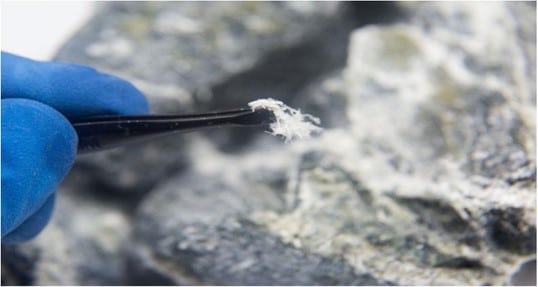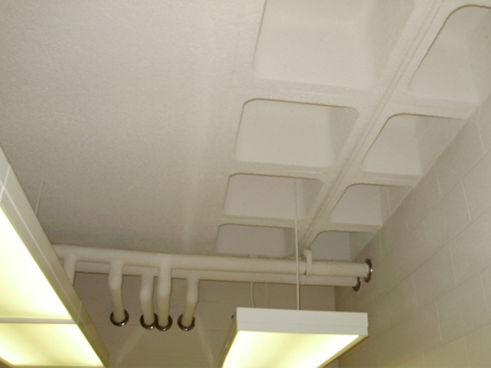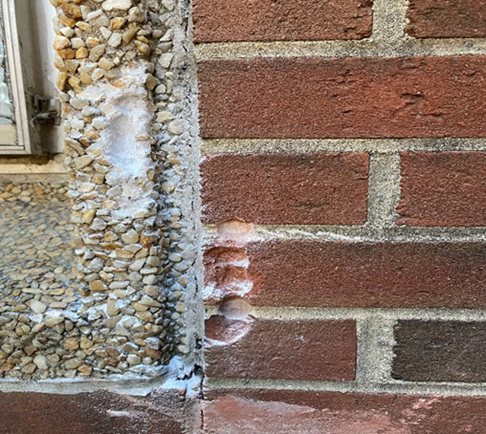Is the Asbestos in Your Building Safe or Hazardous?
September 06, 2023
According to the US Environmental Protection Agency (EPA), the presence of asbestos in a home or building does not necessarily pose an immediate hazard. However, when asbestos materials deteriorate over time, damaged asbestos can release harmful fibers, presenting potential health risks.

What is Asbestos?
Asbestos, a naturally occurring mineral known for its heat resistance and durability, was used in building materials before the 1980s, and its widespread application came with unforeseen health consequences, leading to various respiratory diseases, including cancers like mesothelioma. It is important to know asbestos is still being manufactured in other countries, and asbestos-containing materials are being imported into the US today. As concerns regarding asbestos continue, it is essential for building occupants, owners, and managers to understand the potential risks and best practices for dealing with asbestos in their buildings.
Asbestos refers to six fibrous minerals occurring naturally throughout the world.
- Chrysotile (The most widely used, accounting for approximately 95% of asbestos used around the world).
- Tremolite
- Crocidolite
- Amosite
- Actinolite
- Anthophyllite
The Benefits of Asbestos Abatement Work
Asbestos abatement involves safely removing, encapsulating, or otherwise controlling asbestos-containing materials (ACMs) in buildings or structures to minimize the release of hazardous asbestos fibers into the air. According to the World Health Organization (WHO), asbestos exposure accounts for over 107,000 annual deaths globally due to diseases like lung cancer and asbestosis. By incorporating thorough asbestos abatement measures, the risk of releasing harmful asbestos fibers into the environment is significantly reduced, safeguarding both workers’ health and the general population. Moreover, studies have shown that investing in comprehensive asbestos abatement protocols can save up to 20-30% in overall demolition costs.
Addressing asbestos concerns upfront prevents unexpected project delays that could arise from regulatory interventions or health-related setbacks.
For structures built from the 1920s to present day , the EPA, the Occupational Safety and Health Administration (OSHA), and state agencies require an asbestos assessment prior to renovation or demolition activities. A primary objective involves identifying substances with an asbestos content exceeding 1% . Among the usual suspects are:
- Asbestos Cement Products
-
- Roofing shingles
- Siding panels (including fume hood linings)
- Pipes and conduits
- Corrugated sheets
- Glass racks in laboratories
- Insulation Materials
-
- Thermal insulation for pipes and boilers
- Insulating board
- Construction Materials
-
- Vermiculite insulation
- Textured coatings (such as popcorn ceilings)
- Plaster and joint compounds
- Block coating on concrete masonry units (CMU)
- Rope gaskets
- Fireproofing Materials
-
- Fire-resistant drywall
- Spray-on fireproofing
- Laboratory Equipment
-
- Incubator insulation
- Drying oven insulation
- Heat resistant mittens/gloves
- Miscellaneous Materials
-
- Floor tiles and mastic
- Linoleum sheet flooring
- Joint compound associated with drywall systems
Working with an asbestos consultant increases efficiency and lowers costs. S&ME brings extensive knowledge 30+ years of experience to a project involving the identification and abatement of asbestos containing materials.
Our NVLAP-accredited laboratory can identify asbestos-containing materials. If the removal of such materials is necessary, we can manage and monitor the work. Our experienced accredited inspectors, management planners, and designers provide:
- Hazardous material inspections including mercury, polychlorinated biphenyls, perchlorates, lead paint, chlorofluorocarbons, etc.
- Abatement design and specifications
- Contract Administration
- On-site air monitoring utilizing phase contrast microscopy and project management
- Operations and maintenance plans
- Asbestos laboratory analysis of bulk samples utilizing polarized light microscopy
- Asbestos operations and maintenance training
Project Highlights
UNC Carrington Hall Demolition Project
 The original School of Nursing-Carrington Hall, totaling approximately 95,000 square feet comprised of classrooms, offices, and laboratories, is scheduled to be demolished in the Fall of 2023. S&ME performed the hazardous materials assessment as part of the architectural and engineering demolition team. The assessment included asbestos, lead, Polychlorinated biphenyls (PCBs), and mercury. A remediation specification was prepared based on the hazardous materials assessment. The project includes the removal of textured spray application on the coffered ceiling, CMU block coasting, flooring materials, thermal system insulation, window caulking, and other miscellaneous materials throughout the building. PCB caulk was identified in the exterior expansion joints and around the windows and doors on the interior and exterior of the building.
The original School of Nursing-Carrington Hall, totaling approximately 95,000 square feet comprised of classrooms, offices, and laboratories, is scheduled to be demolished in the Fall of 2023. S&ME performed the hazardous materials assessment as part of the architectural and engineering demolition team. The assessment included asbestos, lead, Polychlorinated biphenyls (PCBs), and mercury. A remediation specification was prepared based on the hazardous materials assessment. The project includes the removal of textured spray application on the coffered ceiling, CMU block coasting, flooring materials, thermal system insulation, window caulking, and other miscellaneous materials throughout the building. PCB caulk was identified in the exterior expansion joints and around the windows and doors on the interior and exterior of the building.
RTI-Clean Classrooms for Carolina Kids
 S&ME is one of the firms selected to participate in the Clean Classrooms for Carolina Kids Project under the direction of Research Triangle Institute. The North Carolina General Assembly allocated $150Min Federal relief funds (ARPA) to test for and remove lead and asbestos in kindergarten through 12th grade schools and childcare centers across the state. This funding also includes testing the drinking water for lead. S&ME will be conducting lead risk assessments, asbestos inspections, preparing management plans, conducting asbestos assessments, and preparing remediation plans for the schools and daycares.
S&ME is one of the firms selected to participate in the Clean Classrooms for Carolina Kids Project under the direction of Research Triangle Institute. The North Carolina General Assembly allocated $150Min Federal relief funds (ARPA) to test for and remove lead and asbestos in kindergarten through 12th grade schools and childcare centers across the state. This funding also includes testing the drinking water for lead. S&ME will be conducting lead risk assessments, asbestos inspections, preparing management plans, conducting asbestos assessments, and preparing remediation plans for the schools and daycares.
Contact Us
For more information on S&ME’s asbestos-related services, please contact Janet Phillips.
